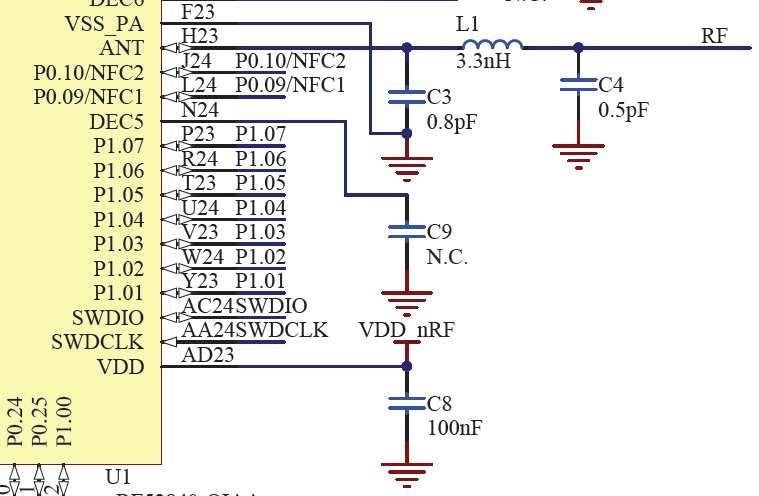Hi,
to what impedance shall the BT antenna be matched?
Copying from the datasheet:
A matching network is needed between the RF pin ANT and the antenna, to match the antenna impedance (normally 50 ohm) to the optimum RF load impedance for the chip. For optimum performance, the impedance for the matching network should be set as described in the recommended AQFN73 package reference circuitry from Circuit configuration no. 1 on page 688.

The Pi network is fine. The values given would work for a given antenna, a given layout, and a given placement/casing. So what impedance the chip "desires to see"? Is it significantly dependent on the BT mode of operation? Any table on that?
Same question for the differential NFC1/2 impedance.
Thanks,
Zeid


